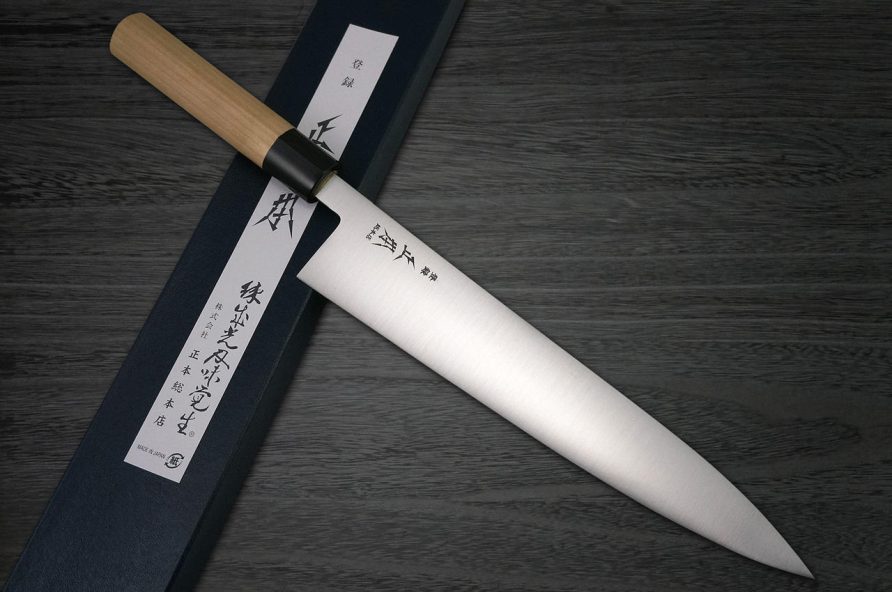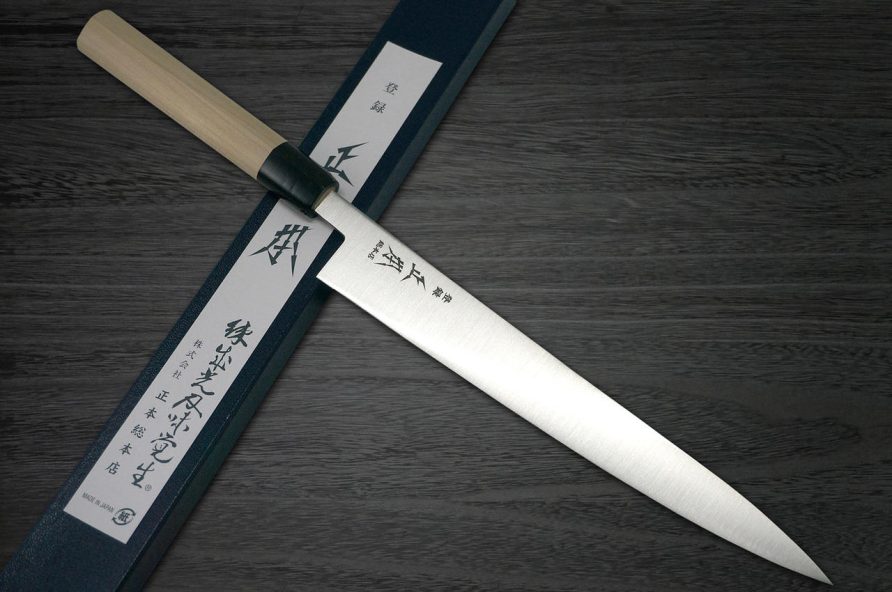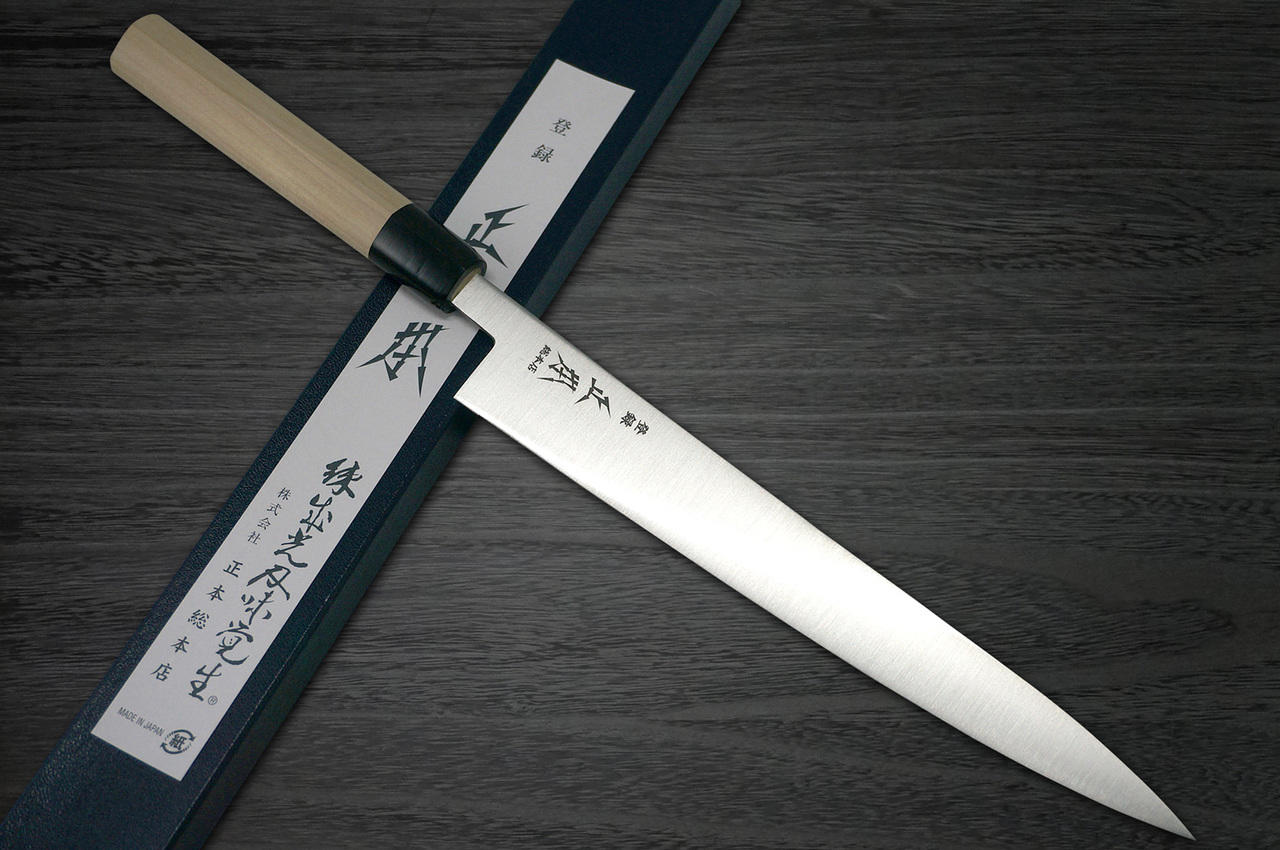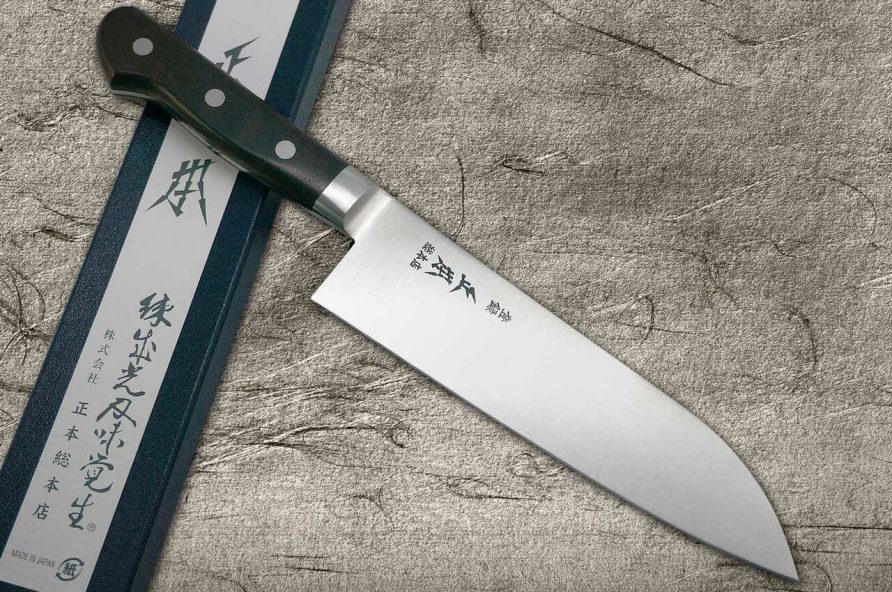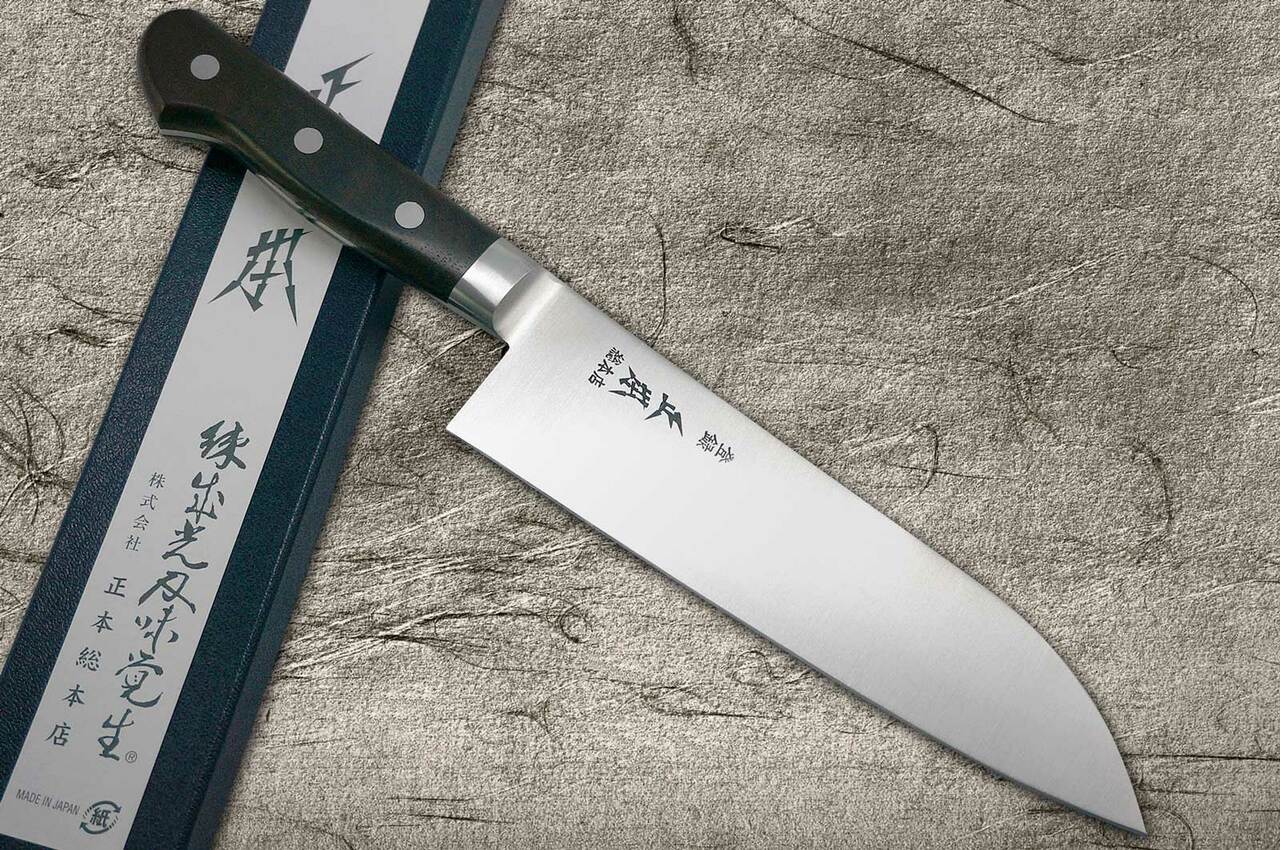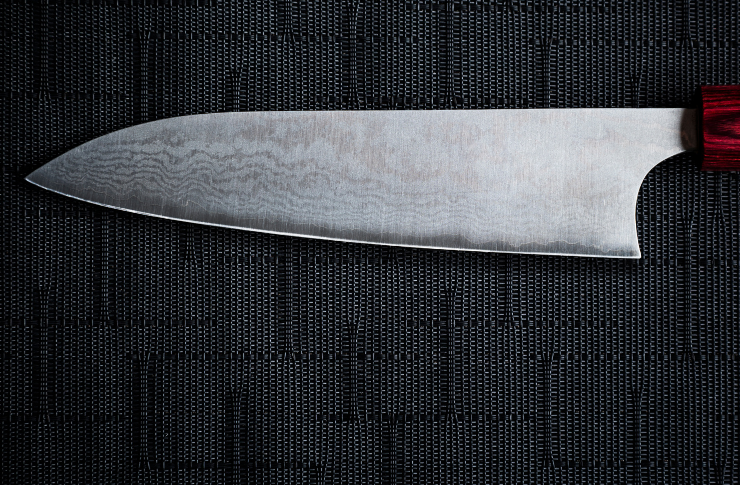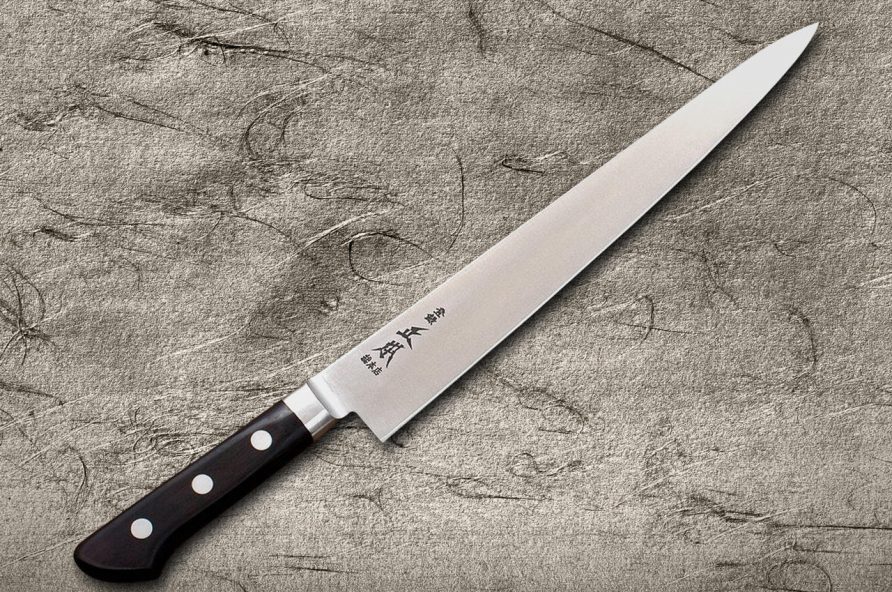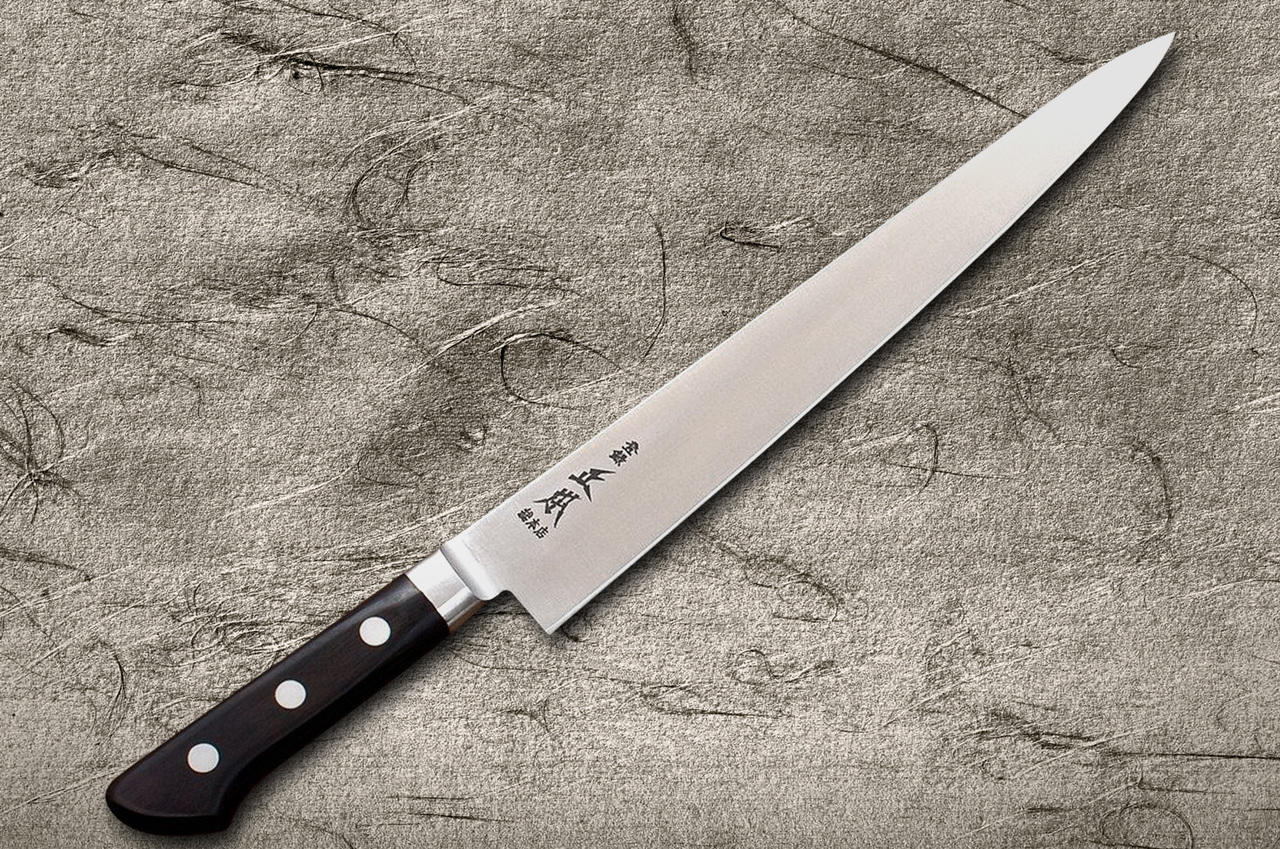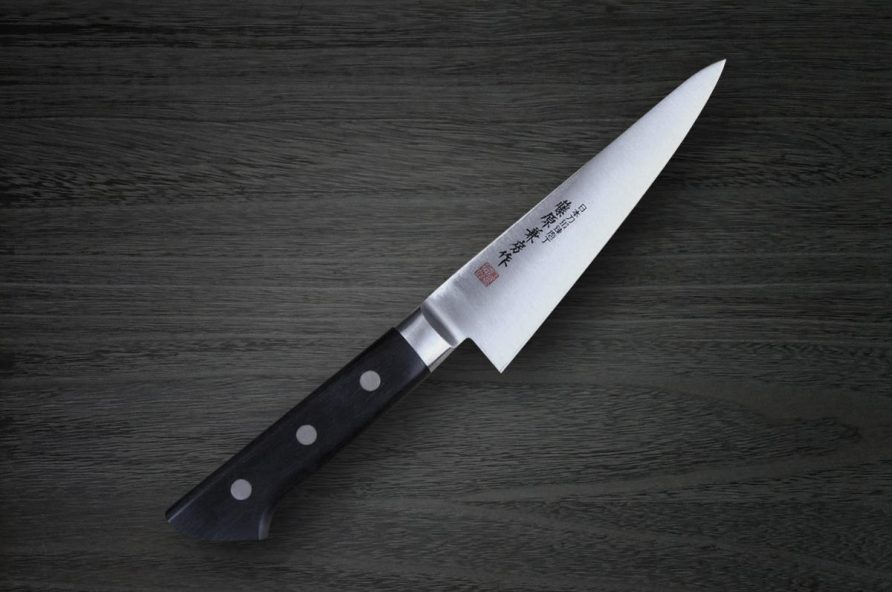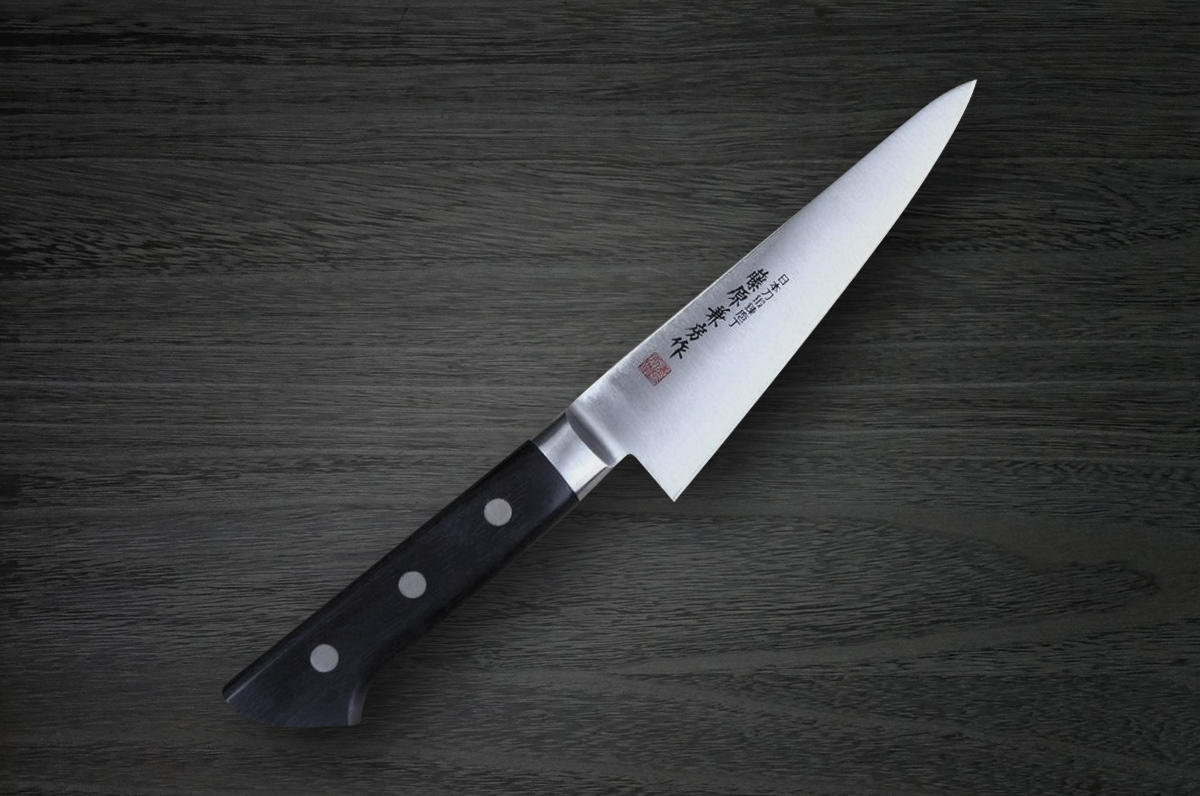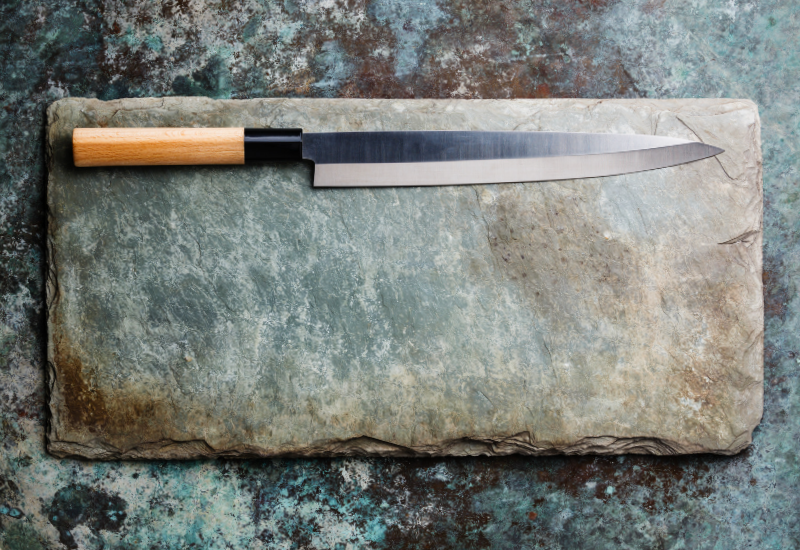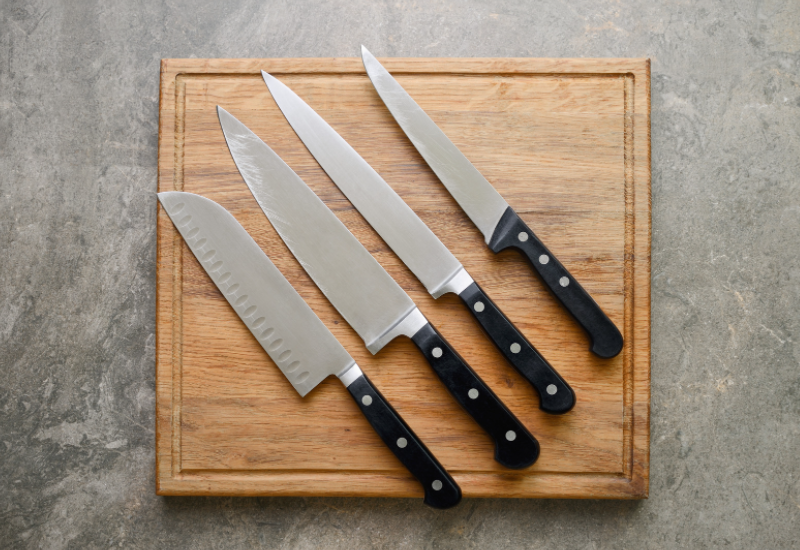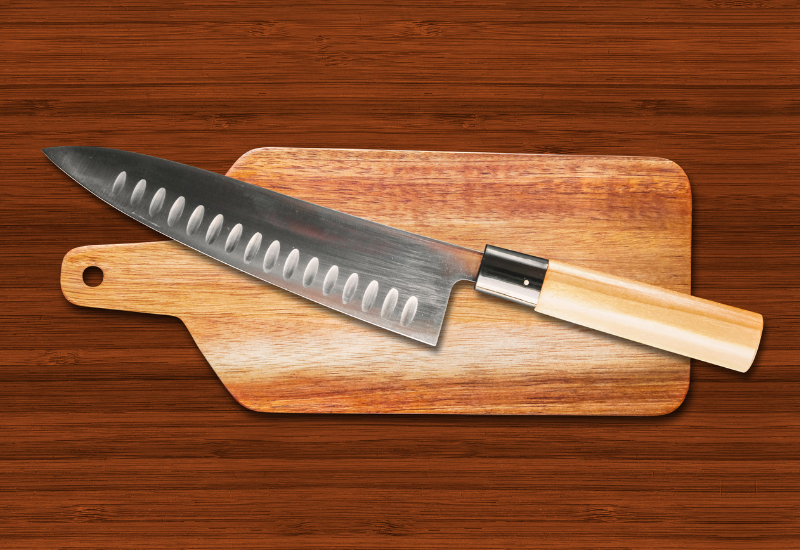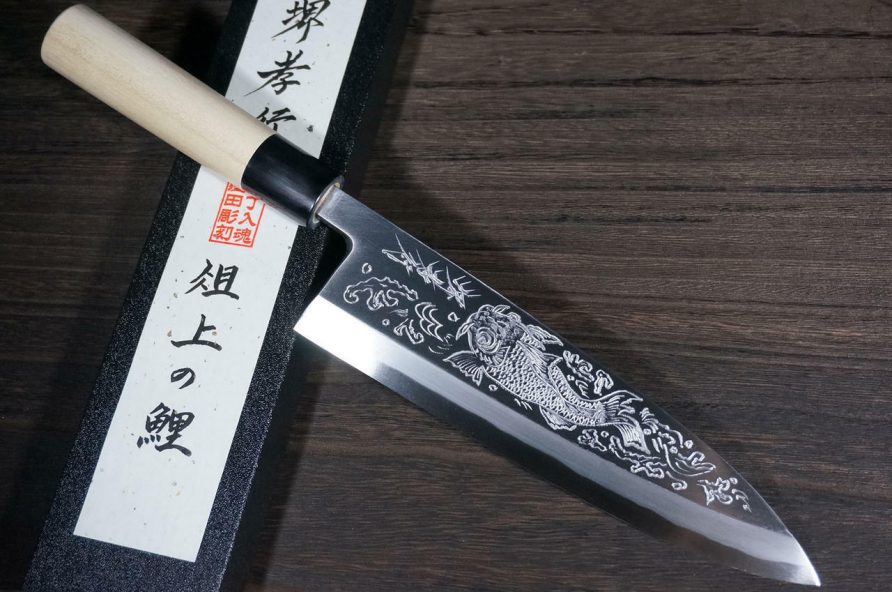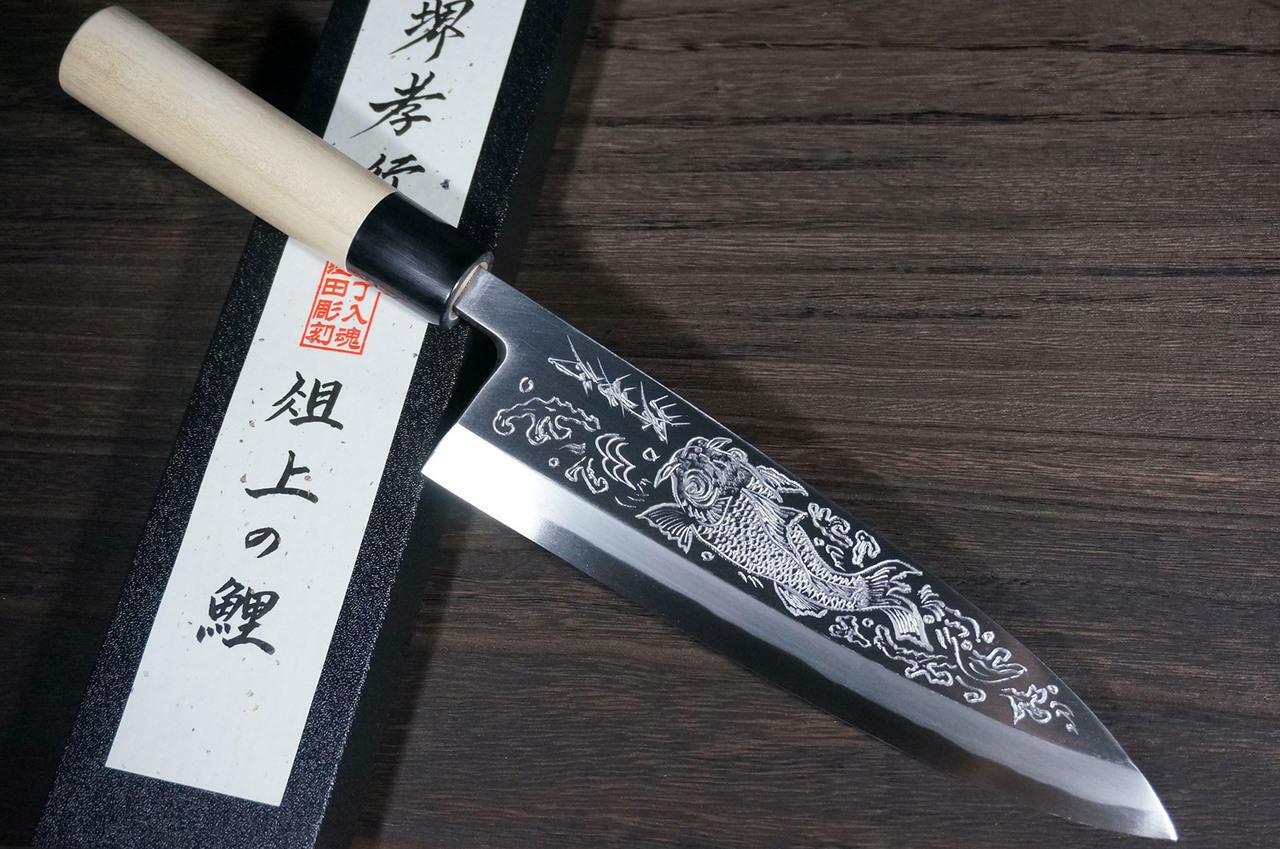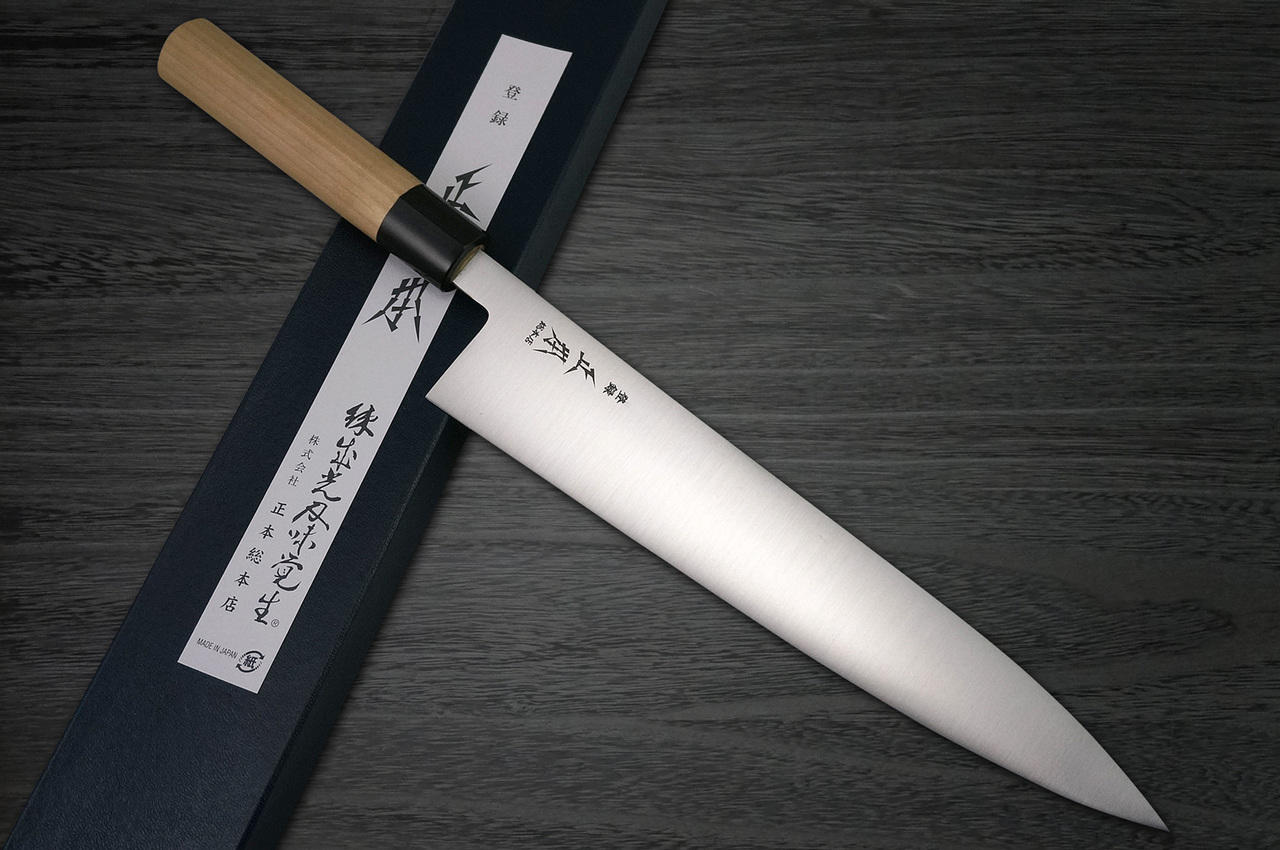
img by : hocho-knife.com
In the echelons of professional kitchens and among culinary enthusiasts, the Masamoto KS Honkasumi Gyokuhaku-ko with Buffalo Tsuba represents not just a knife, but a legacy of Japanese craftsmanship at its zenith. This premier piece from Masamoto, one of the most revered names in Japanese cutlery, encapsulates over a century of knife-making tradition, offering unparalleled performance and elegance. Herein, we delve into the features, performance, and care of this exquisite knife, shedding light on its esteemed status in the culinary world.
Exquisite Craftsmanship and Design
Blade Excellence: The Masamoto KS series features the Honkasumi Gyokuhaku-ko, a high-carbon steel known for its ability to achieve and retain an exceptionally sharp edge. This steel, combined with traditional forging techniques, results in a blade that not only excels in sharpness but also in durability. The meticulous process of layering and refining the steel contributes to the knife’s remarkable cutting performance and resistance to wear.
Elegant Aesthetics: The knife is distinguished by its Buffalo Tsuba, a handcrafted guard made from buffalo horn, enhancing the knife’s balance and beauty. This element not only serves a functional purpose, preventing the hand from slipping onto the blade, but also adds a touch of elegance and distinction, making each knife unique.
Precision Handling: The handle of the Masamoto KS Honkasumi Gyokuhaku-ko is designed for comfort and control. Crafted from high-quality wood, it is shaped to fit snugly in the hand, allowing for precise and effortless cuts. The harmonious balance between the blade and handle ensures that chefs can use the knife for extended periods without fatigue.
Unmatched Performance
The Masamoto KS Honkasumi Gyokuhaku-ko excels in a variety of culinary tasks, from slicing delicate sashimi to precision vegetable cuts. Its razor-sharp edge, combined with the steel’s high-carbon content, allows for thin, precise cuts without tearing or bruising the food. This knife is not only a tool but an extension of the chef’s hand, enabling the expression of culinary art at the highest level.
Care and Maintenance
To preserve the Masamoto KS Honkasumi Gyokuhaku-ko’s beauty and functionality, proper care is essential:
Hand Washing: Always hand wash the knife with mild soap and water, and dry it immediately to prevent rust.
Regular Sharpening: Use a high-quality whetstone to maintain the blade’s edge. Honing with a leather strop can also enhance its sharpness.
Storage: Store the knife in a dry place, preferably in a knife block or sheath, to protect its edge and ensure safety.
Conclusion
The Masamoto KS Honkasumi Gyokuhaku-ko Buffalo Tsuba knife is more than just a culinary tool; it is a testament to the artistry and tradition of Japanese knife-making. Its exceptional craftsmanship, performance, and aesthetics make it a coveted piece for professional chefs and culinary enthusiasts alike. Investing in a Masamoto KS knife means owning a piece of history, a tool that brings the timeless excellence of Japanese craftsmanship into the heart of your kitchen.


